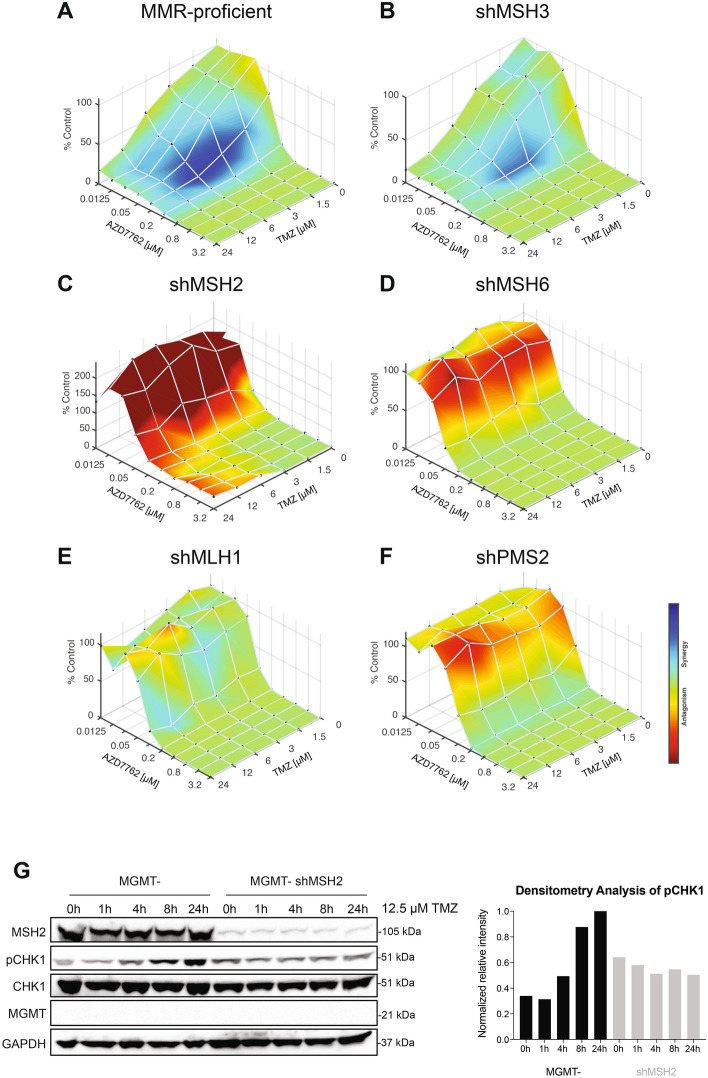Figure 4.
MMR is likely implicated in the entire ATR/CHK1 signaling axis. Synergy assays were performed between TMZ and AZD7762 in the newly created MMR-deficient LN229 isogenic cell lines in triplicate plates before being analyzed by Combenefit. Cells were treated for 6 days with the combination of inhibitors. (A) MGMT- cells that are MMR-proficient and (B) shMSH3 MGMT- cells exhibit some synergy upon treatment with TMZ and AZD7762. (C) shMSH2, (D) shMSH6, (E) shMLH1, and (F) shPMS2 MGMT- cells do not display synergy for the combination of TMZ and AZD7762. This indicates that the knockdown of MSH2, MSH6, MLH1, and PMS2 adversely affects synergy between TMZ and AZD7762, suggesting a role for these proteins in ATR-CHK1 signaling. (G) Western blot of MGMT- and shMSH2 MGMT- cells showing the kinetics of ATR activation through pCHK1 levels after 12.5 µM of TMZ treatment for the time course indicated. From the densitometry analysis of this blot, there is a robust increase in pCHK1 levels over time in the MGMT- MMR-proficient cells, but not in the shMSH2 cells, suggesting that MSH2 is required for ATR activation and signaling to CHK1. The densitometry analysis is based upon the pCHK1 levels from this representative western blot. Full length blots are shown in the supplemental.

